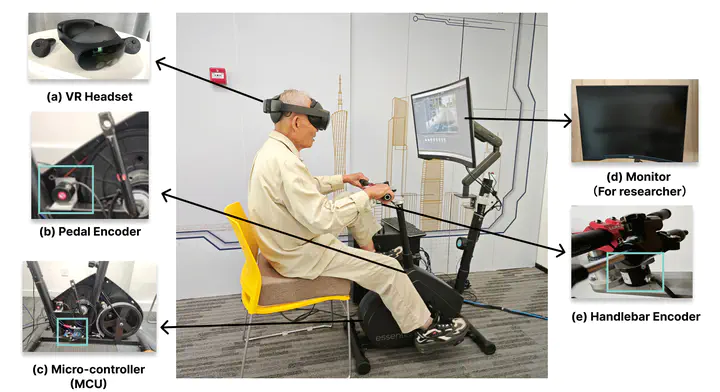SilverCycling: Exploring the Impact of Bike-Based Locomotion on Spatial Orientation for Older Adults in VR

Abstract
Spatial orientation is essential for people to effectively navigate and interact with the environment in everyday life. With age-related cognitive \ adults becomes important. Such advancements not only make VR more accessible to older adults but also enable them to reap the potential health benefits of VR technology. Natural motion-based locomotion has been shown its effective in enhancing younger users’ performance in VR navigation tasks that require spatial orientation. However, there is a lack of understanding regarding the impact of natural motion-based locomotion on spatial orientation for older adults in VR. To address this gap, we selected the SilverCycling system, a VR bike-based locomotion technique that we developed, as a representative of natural motion-based locomotion, guided by findings from our pilot study. We conducted a user study with 16 older adults to compare SilverCycling with the joystick-based controller. The findings suggest SilverCycling potential to significantly enhance spatial orientation in the open-road urban environment for older adults, offering a better user experience. Based on our findings, we identify key factors influencing spatial orientation and propose design recommendations to make VR locomotion more accessible and user-friendly for older adults.